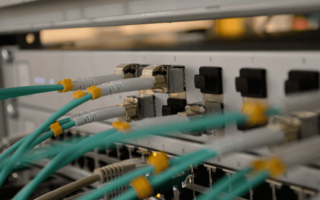We use cookies on our website.
Some of them are necessary for the functioning of the site, but you can decide about others.

What is smart wiring?
Advantages of Smart Wiring
How to Wire a Smart Home
In today's connected world, people want accessibility, security and adaptability. And with the advent of so many new technologies each day, keeping a home's appliances, tools and gadgets working together cohesively is more than desired. It's necessary. Luckily for homeowners, there's a way to seamlessly integrate all of their devices. Smart wiring is the name and home automation is the game.
Put simply, smart wiring is a system of different wires connected in one place. To elaborate, this system of wires is a central hub that allows all of the devices and sensors in a home to be organized into a single platform, with the ability to add more at a later date if needed. This system can include wiring for lighting throughout a home, security systems, internet connections and home entertainment systems, among other things. By arranging a whole-home network into a sleek and logical system, smart wiring installations provide easy accessibility to home wires, and an easy way to expand on the system at a later date if desired. According to HomeAdvisor, an average smart wiring system in 2022 can cost up to $15,000 for a four-bedroom, three-bathroom home. Some luxury fully-connected home installations can cost upwards of $150,000. It's important to keep in mind that new builds or remodels will present an opportunity for a cheaper installation opposed to upgrading a wiring system into an existing home.
In addition to a home’s wiring system being organized in one central location, so too is the ability to control the devices and appliances that belong to them. With one easy-to-use interface, homeowners don't have to worry about downloading different apps to control their wireless devices.
Since the programs and devices that are wired into a modern wiring system are "smart" in and of themselves, this allows end-users to control their devices remotely. Stuck in traffic and left the lights on? Shut them off remotely right from your smartphone.
Smart wiring is capable of controlling home security systems too. Incorporating such features into your smart home network allows for greater protection that can be controlled from a phone. When connected, one has the ability to turn on and off security features with the tap of a finger, as well as receive security alerts on their phone.
Aforementioned, smart wiring configures the system so additional devices can be added later if needed. This means if one year after an installation a homeowner decides they want to install a new smart TV, they won't need to tear through walls to install their new device.
At the center of smart wiring are intelligent devices and appliances. The inherent feature that makes a device intelligent is their ability to provide end-users with valuable data to make proactive energy decisions. Smart thermostats and lighting are great examples of modern devices that provide energy savings to homeowners.
For safety reasons and to guarantee a successful install, a certified electrician is the best route to take when installing a smart wiring network. Certified installers are required to follow a Code of Practice that holds them to certain standards ensuring they'll get the job done right. After all, they are experts in smart home electrical practices.
However, if the DIY bug has bitten you, here are some of the devices you can hardwire yourself so they can communicate with your smart home system:
Once installed, smart switches and outlets allow homeowners to control what they're connected to from their smartphone or smart speaker. As a precaution, you may want to have a voltage tester on hand when wiring these devices to determine which is the hot wire and which is the load wire.
The beauty of a smart smoke alarm is that it can notify you on your smartphone if it is going off or not, so if you aren't home, this is a great way to remain vigilant. If your house has wiring capabilities to support electrical smoke detectors (opposed to battery-powered), then installing a smart smoke alarm will not be much different than a regular one.
A smart thermostat is a great way to reduce energy consumption in your home. While installing a smart thermostat is pretty simple, it's important to get it right so you don't damage your HVAC system.
Smart doorbells allow homeowners to see who is at their door, making them a nice safety addition to any home. If your doorbell is electrical, follow the steps below to install your new video addition.
Smart sprinkler systems take your old irrigation system one step further. Unlike old sprinkler controllers, the smart version can pull weather data to avoid turning on before, during or after periods of rainfall.
One major difference between smart sprinklers and other smart devices is that sprinklers are typically plugged in with an AC adaptor so you will not need to turn your power off to install your new system.
A smart wiring system is fantastic. In our digital world, automating a home's appliances and systems is key for a comprehensive smart ecosystem. Beyond convenience, smart home wiring offers flexibility, safety and close control of a home’s appliances and gadgets. While a certified electrician is the safest route to take when wiring a smart home, some devices can be installed manually depending on one's electrical knowledge and comfortability level. In addition to organizing everything into one standard set up, smart wiring systems future-proof a home so homeowners can expand on their smart network whenever their heart desires.